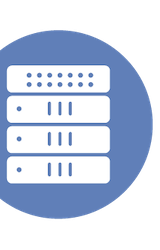Tech Field Day Coverage
Our delegate panel includes independent writers and thought leaders, and we collect their coverage of the event, Tech Field Day presentations, and sponsoring companies here.
Fortinet fully acquired Everest Networks to complete its Wi-Fi offering for large public venues
Fortinet has expanded its capabilities in providing high-density Wi-Fi solutions by acquiring Everest Networks, aiming to enhance wireless services in large public venues. This strategic move is part of Fortinet’s ongoing efforts to deliver comprehensive and robust networking solutions tailored for environments with significant user demand. For additional insights into Mobility Field Day 13, explore Francois Verges’ analysis on LinkedIn Pulse.
Read More:
Fortinet fully acquired Everest Networks to complete its Wi-Fi offering for large public venues
Automating the network design, what does it really mean?
Francois Verges recently shared his insights on the true essence of automating network design, emphasizing its impact on efficiency and accuracy in the field of network engineering. He explores the transformative potential this technology offers for designing more robust and sustainable networks. For further insights into Mobility Field Day 13, catch Francois Verges’ detailed discussions on LinkedIn Pulse.
Read More:
Automating the network design, what does it really mean?
Key Takeaways from Security Field Day
Milou Meier attended Security Field Day and provided a look at each of the presenting companies in this LinkedIn Pulse article. Dell Technologies offers a comprehensive range of security services to enhance organizational security. These services include a zero trust framework and managed services. Additionally, AI tools, such as Microsoft Security’s copilot agents, play a crucial role in mitigating cyberattack risks, improving visibility, and optimizing Sec Ops efficiency. Veeam Solutions and Coveware Services provide essential backup and incident response solutions, ensuring resilience against ransomware and other threats.
Read More:
Key Takeaways from Security Field Day
Ubiquiti’s Growing Presence in the Enterprise Market
Francois Verges recently provided an insightful analysis on Ubiquiti’s expanding role in the enterprise market, highlighting how their innovative products are becoming more prevalent in sophisticated IT environments. His commentary addresses Ubiquiti’s strategic advancements and their potential implications for industry standards and competitive dynamics. For further details on Mobility Field Day 13 covered by Francois, check his posts on LinkedIn Pulse.
Read More:
Ubiquiti's Growing Presence in the Enterprise Market
Backups That Belong in the Cloud—But Not Too Close
Mike Stanley recently explored the strategic nuances of cloud backups, emphasizing the importance of maintaining an optimal distance from primary data to enhance security and reliability. He outlined key considerations for enterprises looking to leverage cloud environments for their backup solutions. For additional insights from Cloud Field Day 23, check out more articles by Mike Stanley.
Read More:
Backups That Belong in the Cloud—But Not Too Close
Using a network diagram to configure the network – Another example of GenAI being used by networking vendors
Francois Verges recently explored innovative uses of GenAI in networking, focusing on the practical application of using a network diagram for configuration. This approach showcases how networking vendors are integrating advanced AI to streamline and enhance network management processes. Discover more insights on Mobility Field Day 13 from Francois Verges on LinkedIn Pulse.
Read More:
Breaking Free from Hardcoded Security: Microsoft Introduces Human-in-the-Loop AI Agents
Microsoft has unveiled a groundbreaking innovation in cybersecurity with their introduction of human-in-the-loop AI agents, designed to transcend traditional hardcoded security practices. These AI systems feature advanced capabilities to analyze and respond to security threats dynamically, incorporating human oversight for heightened accuracy and adaptability. For additional insights into Security Field Day 13, explore Jack Poller’s comprehensive analysis on LinkedIn Pulse.
Read More:
Breaking Free from Hardcoded Security: Microsoft Introduces Human-in-the-Loop AI Agents
QlikConnect 25 – Keynote Updates – 05/14/2025
Frederic Van Haren recently provided insightful updates on the Keynote at QlikConnect 25, held on May 14, 2025. His summary showcases the emerging trends and strategic advancements discussed during the event, focusing on the impact on enterprise analytics and data management. For additional insights and takeaways from the conference, follow Frederic Van Haren’s coverage on LinkedIn Pulse.
Read More:
QlikConnect 25 - Keynote Updates - 05/14/2025
Uncompromising Network Visibility: How cPacket Augments Security with Advanced Telemetry and AI
Jack Poller recently dissected how cPacket Networks is enhancing security in today’s enterprises by integrating advanced telemetry and AI into their network solutions. His analysis illustrates how cPacket’s sophisticated tools provide an unrivaled clarity and insight, allowing for proactive threat detection and management. For additional discussions and insights from Security Field Day 13, follow Jack Poller’s coverage on LinkedIn Pulse.
Read More:
Uncompromising Network Visibility: How cPacket Augments Security with Advanced Telemetry and AI
Codiac Refreshes Container Management Across SDLC: Some Key Features on the Platform
In this article, Sulagna Saha reviews the updated features of Codiac’s container management platform aimed at optimizing the software development life cycle (SDLC). She highlights the platform’s enhanced security frameworks, streamlined operations, and DevOps integration, which collectively bolster development efficiency and process transparency. For further details on AppDev Field Day 2 and more insights into platform engineering from Sulagna Saha, visit her work at Techstrong’s sites, including the new Platform Engineering website.
Read More:
Codiac Refreshes Container Management Across SDLC: Some Key Features on the Platform
HPE Greenlake Paves a Path to a Hybrid SAP ERP Future
Allyson Klein discusses the integration between HPE GreenLake and SAP ERP, highlighting how this alliance provides flexible, hybrid cloud solutions for enterprise resource planning systems. The article explores the benefits of agility and innovation offered by the blended capabilities of HPE’s infrastructure and SAP’s application suite, tailored to modernize business operations effectively. For further insights on Cloud Field Day 23, explore more articles by Allyson Klein on The Tech Arena.
Read More:
HPE Greenlake Paves a Path to a Hybrid SAP ERP Future
Scality Showcases Real-World Resilient Cloud Storage Solutions
Allyson Klein provides an insightful overview of Scality’s presentation at Cloud Field Day 23, highlighting their demonstration of resilient cloud storage solutions tailored for real-world applications. Her coverage focuses on how these solutions offer enhanced durability and scalability, essential for today’s data-intensive environments. For additional reports on Cloud Field Day 23, visit Allyson Klein’s articles on The Tech Arena.
Read More:
Scality Showcases Real-World Resilient Cloud Storage Solutions
OpsRamp Shows Unified IT Operations for Fast Incident Management
Allyson Klein explores how OpsRamp is revolutionizing IT operations by providing a unified platform designed for rapid incident management. The platform enhances the ability of IT teams to detect and resolve issues swiftly, ensuring minimal disruption and maintaining system integrity. Explore additional insights on Cloud Field Day 23 by Allyson Klein at The Tech Arena.
Read More:
OpsRamp Shows Unified IT Operations for Fast Incident Management
VIAVI: PCAPs and LLMs
Eric Stewart provides an insightful overview of how VIAVI utilizes PCAPs (Packet Capture) and LLMs (Large Language Models) to enhance network performance and security monitoring. In his article, he explores the integration of these technologies in network management, highlighting their impact on troubleshooting and cyber defense strategies. For additional insights and articles by Eric Stewart, visit his LinkedIn Pulse.
Read More:
Qumulo Showcases Cloud Data Fabric Innovation
Allyson Klein provides an insightful overview of Qumulo’s latest developments in cloud data fabric innovation at Cloud Field Day 23. She covers how Qumulo is expanding its capabilities to support dynamic file data services across multi-cloud environments. For further in-depth coverage of Cloud Field Day 23, see more articles by Allyson Klein on The Tech Arena.
Read More:
Qumulo Showcases Cloud Data Fabric Innovation
MinIO Strong Consistency and object gateways
Ray Lucchesi recently discussed MinIO’s enhancement to their object storage which now supports strong consistency, ensuring more reliable data transactions. He also explored how MinIO serves as an effective object gateway by facilitating the integration of S3-compatible storage into traditional apps without major changes. For additional insights from Cloud Field Day 23, you can read more articles by Ray Lucchesi on Silverton Consulting.
Read More:
MinIO Strong Consistency and object gateways
Clumio at Cloud Field Day 23: Backups That Belong in the Cloud – But Not Too Close
Mike Stanley provides an insightful analysis of Clumio’s presentation at Cloud Field Day 23, highlighting their strategic approach to cloud-based backups that maintain a critical distance from data sources to enhance security and compliance. He discusses how Clumio addresses the complexities of protecting data across diverse environments while adhering to regulatory requirements. Explore additional discussions and insights from Cloud Field Day 23 on Mike’s website.
Read More:
Clumio at Cloud Field Day 23: Backups That Belong in the Cloud – But Not Too Close
Cisco Live 2025: Still A Blast, But Less Of One
Eric Stewart provides a reflective analysis on Cisco Live 2025, noting a decrease in the event’s impact compared to previous years, yet it remains a significant occasion in the tech industry. He assesses various facets of the conference, including keynote speeches, technological advancements, and participant engagement. For more coverage by Eric Stewart on this topic, visit his website.
Read More:
Cisco Live 2025: Still A Blast, But Less Of One
Nile’s Networking Has Real Advantages, But Is it TOO Exotic?
Lee Badman explores the unique networking solutions offered by Nile, weighing their innovative aspects against their potentially excessive exoticness. He assesses whether their distinctive approach provides real competitive advantages in the tech landscape. Although Lee was not a Mobility Field Day 13 delegate, we look forward to seeing him at a future Tech Field Day event!
Read More:
Nile’s Networking Has Real Advantages, But Is it TOO Exotic?
Is Cisco Live Still The Place To Be
Tom Hollingsworth recently explored whether Cisco Live continues to be a vital hub for networking professionals seeking to stay current in the ever-evolving tech landscape. He examines the event’s enduring value, focusing on its educational sessions, networking opportunities, and powerful keynote presentations. Extensive coverage of Cisco Live for over a decade by Tom Hollingsworth can be found on his blog.
Read More:







